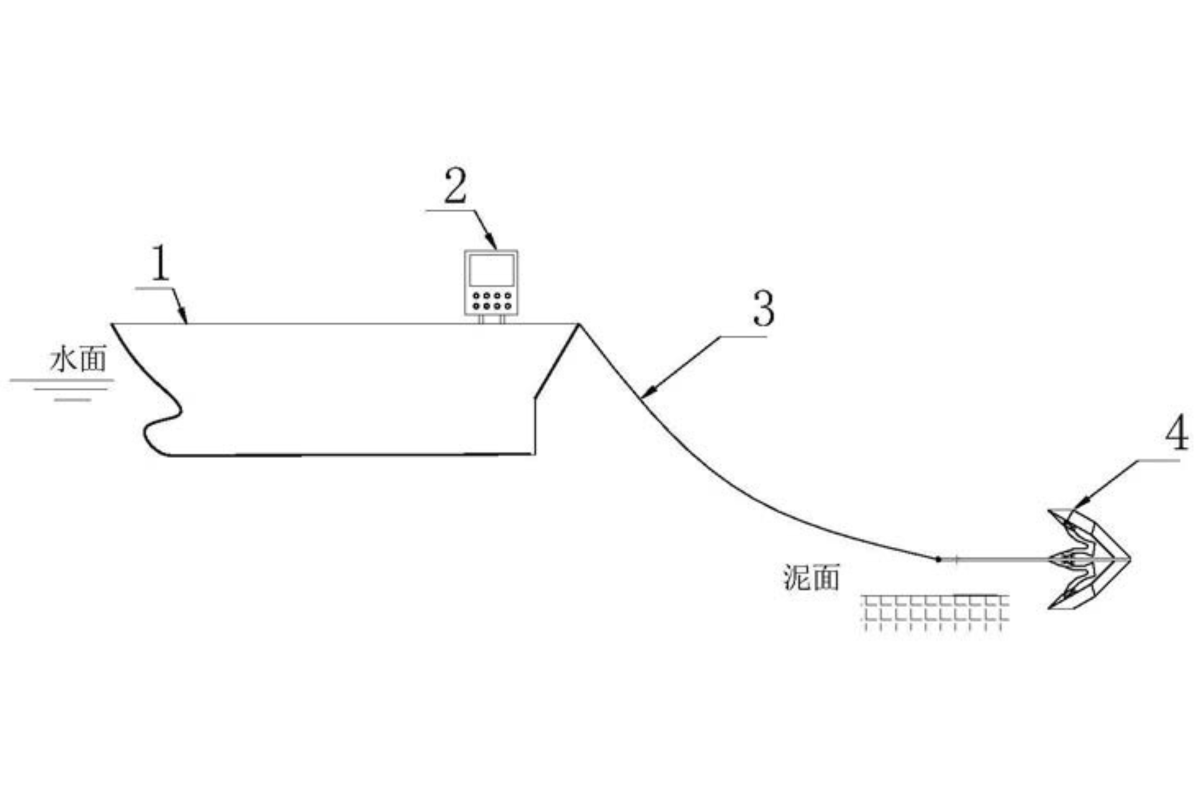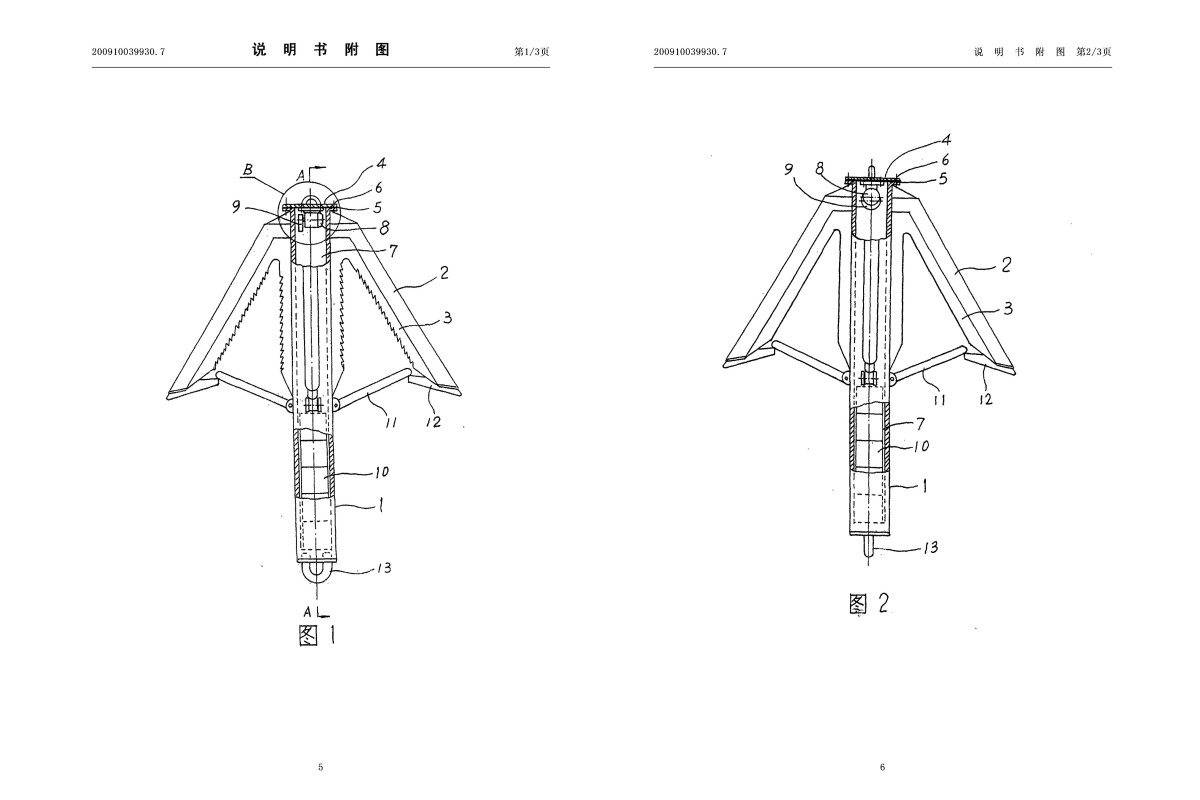With Chinese ships suspected to have cut key undersea communications cables around the world, a Newsweek review of Chinese-language patent applications shows that engineers in China invented devices to sever such cables quickly and cheaply.
Cables have been damaged in the Baltic Sea, off Norway and around Taiwan. Chinese or Russian ships have been identified criss-crossing the locations prior to the damage, making them the main suspects and raising questions over whether it was sabotage. China has said at least one of the incidents was an accident.
While the fact that patents were sought for anchor-like devices for cutting submarine cables does not mean that they were used in these incidents, it does indicate an interest in cutting them, marine experts said.
The cables are vital for providing data connections and internet service in an increasingly connected world.
Submarine Cable Cutting
A "dragging type submarine cable cutting device" was developed in 2020 by a team of engineers at Lishui University in coastal Zhejiang province, which is opposite Taiwan.
"With the development of science and technology, more and more submarine cables and communication cables are laid on the seabed of all parts of the world and the cables need to be cut off in some emergency situations," the Lishui University authors wrote.
"The traditional cutting method needs first to detect the position of the cables, then excavate and salvage them for cutting. The process is complex, a lot of expensive equipment is needed, and the cost is too high. There is a need for a fast, low cost cutting apparatus for submarine cables to accomplish this task," Zhang Shusen, Dai Ying, Fu Changrong, Gao Zikun, Li Xuping and Ji Guangyao wrote.

Copper residue on the cutting anchor would indicate if the cut was successful, the patent application said. Copper is the preferred conductor material used in subsea cables.
Reached by telephone for comment, the deputy director of Lishui University's Scientific Research Division, Wang Yan, said, "No need, no need" then hung up. The Chinese embassy in Washington, D.C. did not respond to an email requesting comment on the cable cutting incidents and on the patents.
The 2020 effort built on a previous patent application, in 2009, for an anchor-shaped "ocean towing type cutting device" by marine engineers at the South China Sea branch of the State Oceanic Administration of China.
The reason given for needing such a device was the existence of illegal cables off China that needed to be destroyed, He Honghui, Liu Yuqiang, Sheng Yanfeng, and Wang Rongcan wrote in their patent application. Both applications were dropped or turned down for reasons that are unclear, according to records.
A Norwegian expert on subsea cables who spoke on condition of anonymity because of the sensitivity of the situation said that the reasoning that the devices were necessary to remove illegal cables was absurd because the method was random and could also lead to damage to useful cables.
China and Russia
Such incidents are not completely new, with Russian ships suspected of using doctored anchors to damage underwater infrastructure for decades, he said. Russia and China call each other comprehensive strategic partners.
Chinese ships, including the Xing Shun 39, the Newnew Polar Bear and the Yi Peng 3, were present at the exact times and locations of recent incidents in different parts of the world. The Chinese government has said that damage to Baltic cables in 2023 by the Newnew Polar Bear was caused by an anchor but that it was an accident.
In self-ruled Taiwan, which China claims, the Coast Guard said that a telecoms cable was severed off its northern coast on Jan. 3, with the Xing Shun 39 suspected. Analysts said it was a possible grey-zone, or hybrid, attack.
"China certainly has the technical capacity and motivation to take on such a hybrid threat operation, in which a nominally commercial vessel is suddenly utilized for subsea infrastructure sabotage around Taiwan - after all this is the trend we continue to see play out in European waters, and also mirrors other recent incidents in the cross Strait region, such as the 2023 cutting of subsea telecoms cables to the Matsu islands by a purported Chinese fishing vessel," said Benjamin L. Schmitt, Senior Fellow at the University of Pennsylvania's Kleinman Center for Energy Policy, in an email to Newsweek. The Matsu islands lie in the Taiwan Strait between Taiwan and China, just a few miles off the China coast.
"The fact that there are multiple technical patents that Chinese engineers applied for to conduct such a subsea cable cutting operation only adds to the suspicion that Beijing may have not only the motivation, but also is actively developing technical options for completing these sort of subsea warfare operations in the future," Schmitt said.
"It's an urgent issue," said Gregory Falco, an Assistant Professor at the Sibley School of Mechanical and Aerospace Engineering and the Systems Engineering Program at Cornell University. "This is a perfect example of the dual use exploits China has been perfecting over the years."
Falco said that the technology was commercially "valid" as it could for example be used to remove old cables in a situation where divers or remotely operated underwater vehicles could not be used. "But it's obviously going to be used for other purposes," he said.
China's arsenal
Said Schmitt, "the fact that China has developed mechanical systems such as an 'ocean towing type cutting device' and a 'towed submarine cable cutting device and cable cutting method thereof' suggest that Beijing is keeping multiple technical options in its arsenal for manifesting seabed warfare threats toward subsea energy and telecommunications infrastructure worldwide."
"It is vital that global democracies mount a significant response to deter future attempts by Russia and China to disrupt Western critical subsea infrastructure, acts which aim to undermine democratic resilience," Schmitt said, recommending NATO consultative mechanisms and increased offshore and satellite monitoring.
"Inaction will only embolden Moscow and Beijing to continue to engage in these disruptive sabotage operations worldwide to the detriment of global security," he said.





















 English (US) ·
English (US) ·